What to do and specialist resources to support the speech, language and communication
You haven't selected an area yet so you will only see core resources from across the UK. Select your local area from the home page
The resources here will help you reach the outcome: "I know what to do and have the resources to support toddlers who need specialist speech, language and communication support."
Click the star icon ![]() next to the items you want to save and view them in your pathway
next to the items you want to save and view them in your pathway
Tiny Happy People SEND information
This area of the Tiny Happy People BBC website provides a wide range of information, ideas and activities for parents of toddlers with SEND.
Cost: Free



The SCERTS® Model
The SCERTS® Model is a research-based educational approach and multidisciplinary framework that directly addresses the core challenges faced by children and persons with ASD and related disabilities, and their families. SCERTS® focuses on building competence in Social Communication, Emotional Regulation and Transactional Support as the highest priorities that must be addressed in any program, and is applicable for individuals with a wide range of abilities and ages across home, school and community settings.
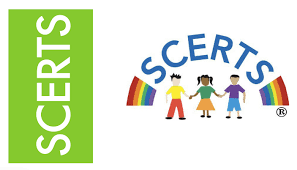

Using visual support
Parents play a key role in supporting their toddler's language and communication skills in everyday life. Children learn about the world through their experiences and interests particularly within their play. Kent Community Health NHS Foundation Trust provide information and opportunities for families learn more about developing their toddler's speech and language - this video introduces how to use visual support to help communication.
Cost: Free




Afasic
Afasic supports parents and carers with young children who have difficulties with listening, talking and understanding others. Here is information for you to use and share with families of the children you support. It includes a wide range of information about talking, listening and understanding and what might cause these difficulties. If families are worried that their toddler is not talking or not saying as much as other children of their age, they can contact Afasic by telephone or email to speak to someone who can help.
Cost: Free
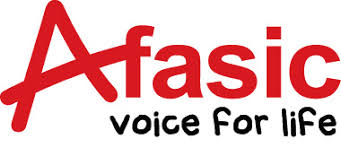



What Works database
The Communication Trust worked with the Better Communication Research Programme to develop the What Works database of evidenced interventions to support children's speech, language and communication. What Works is endorsed by the Royal College of Speech and Language Therapists. It supports practitioners to deliver evidence-informed interventions and approaches to support children and young people with speech, language and communication needs.
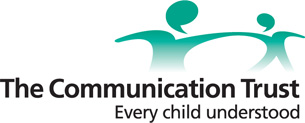


Signalong Training
Signalong provides training and resources to assist those with communication difficulties and English as an additional language.
Signalong is a key word sign-supported communication system based on British sign language and is used in spoken word order. It uses speech, sign, body language, facial expression and voice tone to reference the link between sign and word.
Cost: Free & £




The Hanen Centre
The Hanen Centre offers evidence-based interventions and professional development opportunities to early childhood education professionals. Their training programmes and interventions provide practical, naturalistic approaches for promoting the social, language and early literacy skills of preschool children.
Cost: £



AAC information
The “Focus On…” series of eight leaflets cover topics related to augmentative and alternative communication (AAC). They are available in print copy and as downloadable PDF files.
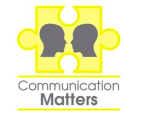



Makaton sign and symbol resources
These free Makaton resources are available for you to access and use to support communication with toddlers. These symbols and signs, which can also be shared with families, help you to provide extra information and clues about what you are saying as well as support the development of essential communication skills such as attention and listening and understanding.
Cost: Free
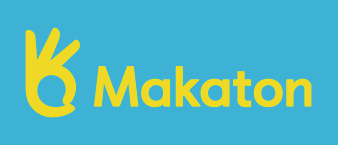

EarlyBird Programme
EarlyBird is a support programmes for parents and carers, offering advice and guidance on strategies and approaches to working with young autistic children under five years. The programme works on understanding autism, building confidence to encourage interaction and communication, and understanding and supporting behaviour.




Developing Joint Attention
Birmingham Community Healthcare Speech and Language Therapists have produced this video to show you how to help develop your child's joint attention - this means being able to focus on the same thing as you at the same time. How to help your child developing joint attention through play is broken down to help you easily understand what to do step by step.
Cost: Free




Now and Next Boards
Birmingham Community Healthcare Speech and Language Therapists have produced this video to show you how to use a 'now and next' or 'first and then' board to help your child understand what is going to happen next and to encourage them to do what you want them to do. It explains how using pictures can help if children are having difficulties with language.
Cost: Free



Using Objects and Sensory Cueing
Birmingham Community Healthcare Speech and Language Therapists have produced this video to show you how to use objects and sensory cueing to link words, objects and routines. This helps children prepare for and anticipate what is going to happen next; supports language development; supports them to become engaged in a variety of daily routines.
Cost: Free


Signs and Symbols
Widgit provides symbols that can be used to support communication making information, documents and resources to be more accessible and inclusive. The symbols can be used for a variety of purposes such as creating communication books to share information; visual timetables to support understanding of structure and routine; task boards to support independent learning; pictures to develop vocabulary and to support children learning English as an additional language.
This website has information to support your understanding of how to use symbols including training resources, events and links to a network of organisations around the UK who offer advice and support.
There is also information for parents and carers to help them understand how they can use symbols to support their child.
Cost: £9/month upwards


Hanen Professional Development Programmes
The Hanen Centre offers evidence-based professional development opportunities to early childhood education professionals. These training programmes provide practical, naturalistic approaches for promoting the social, language and early literacy skills of preschool children.
Cost: £



Makaton training
Information about a variety of Makaton training options including online; face to face and inhouse workshops. This page also provides information about the different levels of training that Makaton offer.
Cost: £









